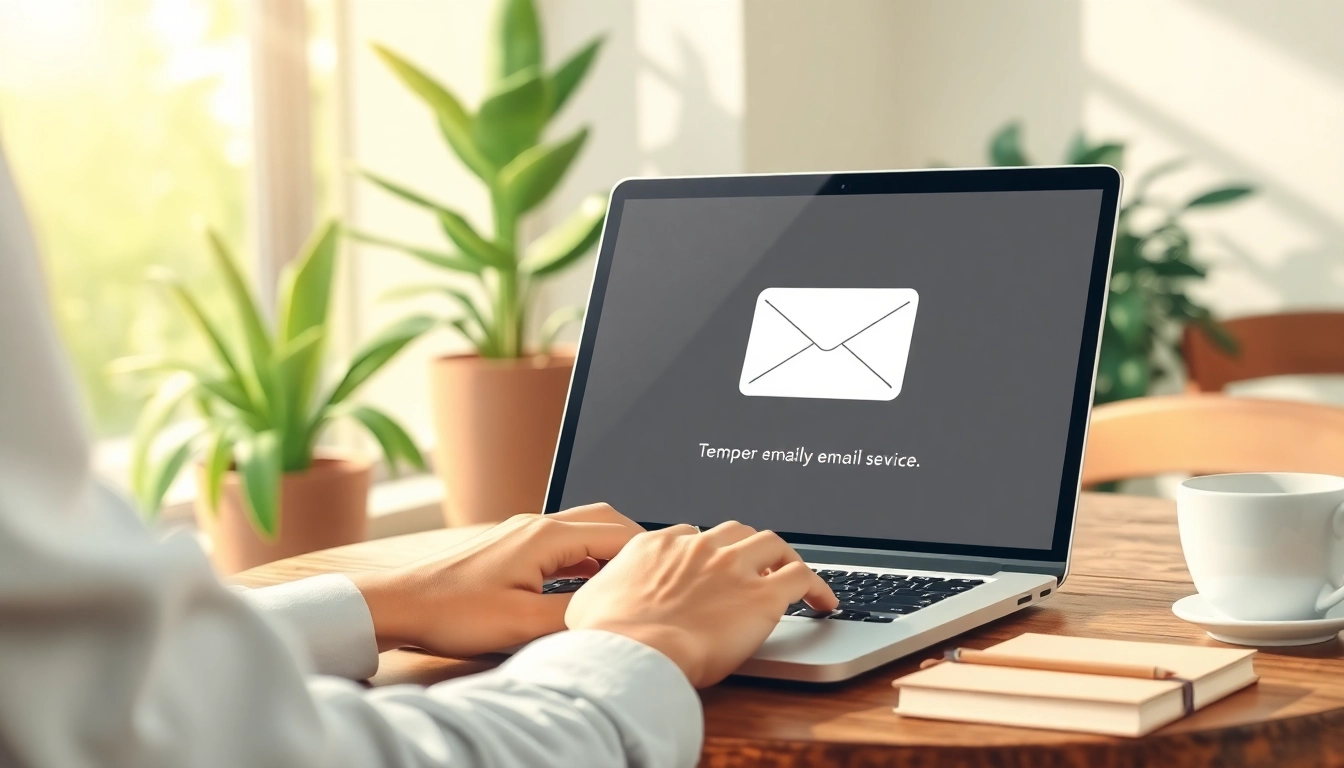Understanding 10 Minute Mail: What It Is and Why It Matters
In an age where personal data is increasingly at risk of exposure, the need for privacy has never been more crucial. One innovative tool that addresses this concern is 10 minute mail, a temporary email service that allows users to receive emails on a disposable address that expires after ten minutes. This service has gained popularity for its effectiveness in protecting personal information while navigating online activities. But what exactly is temporary email, and why does it matter?
The Concept of Temporary Email
Temporary email, also known as disposable email, serves as an alternative to traditional email accounts. Users can generate a temporary email address that is valid for a short duration—commonly ten minutes. Once this time lapses, the email account and all messages are deleted, ensuring that no trace of the information persists. Temporary emails were designed primarily to combat the increasing threats of spam and to enhance user privacy.
Benefits of Using 10 Minute Mail
The benefits of using services like 10 minute mail are manifold:
- Enhanced Privacy: By using a temporary email, you can avoid sharing your personal email address, reducing the chances of being targeted by advertisers and spammers.
- Spam Reduction: Any subscriptions or registrations that might lead to unwanted emails can be handled through a temporary address without cluttering your main inbox.
- Quick and Efficient: Setting up a new temporary email is accomplished in seconds, providing immediate access to email functionalities when needed.
Common Use Cases for 10 Minute Mail
Users frequently turn to 10 minute mail for various scenarios, including:
- Account Verifications: Many websites require email verification when signing up. A temporary email can take care of this without requiring you to divulge personal information.
- Downloading Apps or Content: Some online platforms might request an email before allowing access to downloads. Temporary emails are perfect for this situation.
- Avoiding Promotional Emails: If you are curious about a service that offers a free trial, using a temporary email can prevent future promotional emails from cluttering your inbox.
How to Use 10 Minute Mail Effectively
Getting Started: A Step-by-Step Guide
Using 10 minute mail is straightforward. Here’s how you can get started:
- Visit the Website: Navigate to a legitimate 10 minute mail service.
- Generate an Email: Click a button to create your temporary email address. This often takes just a split second.
- Copy the Email Address: Once generated, copy the address to use it for your intended purpose.
- Receive Emails: Use the temporary email address where required. Incoming emails will appear on the web page.
- Monitor the Timer: Be mindful of the countdown timer, as once it reaches zero, the address will expire.
Best Practices for Ensuring Privacy
To maximize your privacy while using 10 minute mail, adhere to these best practices:
- Limit Personal Information: Avoid giving out any sensitive personal information or using the temporary email for critical accounts.
- Consider End-of-Life Timing: Ensure you know when the email expires, especially if you’re expecting important verification links.
- Use Alternate Browsers: For better security, start a private browser session when accessing temporary email services.
Troubleshooting Common Issues with 10 Minute Mail
While 10 minute mail services are generally user-friendly, you may encounter occasional issues. Here are solutions to common problems:
- Email Not Received: Make sure the site you are registering with has no restrictions on temporary emails. Check if the email has a delayed arrival.
- Expired Address: If your address expires before you received an email, simply generate a new address.
- Web Page Refresh Issues: If the email inbox isn’t refreshing, try reloading the page or accessing the service through a different browser.
Comparing 10 Minute Mail with Other Email Alternatives
10 Minute Mail vs. Permanent Email Addresses
A crucial aspect of understanding 10 minute mail is its contrast with permanent email addresses. Permanent email, often linked to your actual identity, is necessary for long-term communications and vital services. Conversely, the temporary nature of a 10-minute email address enhances security but limits its utility for ongoing correspondence.
Disposable Email Services Overview
While 10 minute mail is just one example, numerous disposable email services exist, each offering unique features. Key differentiators among these services include duration of the email validity, capacity for receiving attachments, and user experience/interface design. Understanding these variants can help you select the service that best suits your needs.
Security Features to Look For
Not all disposable email services provide the same level of security. When evaluating options, consider the following factors:
- Encryption: Ensure that the service employs adequate encryption protocols to protect user data.
- No Logs Policy: Look for services that do not keep records of your activity or personal information.
- User Reviews: Research user experiences to understand the reliability and security of the service.
Implications of Using 10 Minute Mail for Online Sign-Ups
Protecting Your Personal Information
Utilizing 10 minute mail is an effective strategy for safeguarding your personal information. By minimizing the number of platforms that hold your data, you reduce the risk of potential breaches or information theft. This practice is especially advisable for sites that inherently carry a higher risk of data exposure.
Avoiding Spam and Unwanted Promotions
The reality of modern online interactions is that many services will inundate users with promotional material. Using a temporary email for sign-ups can help shield your primary inbox from spam and promotional clutter, providing a streamlined user experience.
Regulatory Considerations in Using Temporary Emails
As privacy regulations evolve, the use of temporary emails may come under scrutiny. Since disposable email services can obscure identity, users should remain aware of the terms set by service providers. Additionally, understanding the implications of using temporary emails for legitimate services is essential in maintaining compliance with regulation.
The Future of Temporary Email Services
Emerging Trends in Email Privacy Solutions
The impending future will likely see a rising need for both email safety and user privacy. Temporary email addresses could become more sophisticated, featuring enhanced capabilities such as automatic expiration based on user-defined criteria. Increased awareness of data protection should drive innovation within this segment, offering users better control over their information.
Potential Innovations in 10 Minute Mail Services
Future iterations of 10 minute mail could introduce advanced functionalities. Anticipated innovations include integration with identity verification protocols, AI-driven spam detection, and cross-platform compatibility to enhance user satisfaction.
User Feedback and Community Insights
The evolution of temporary email services is often shaped by user feedback. Engaged user communities are finding new applications and sharing tips about utilizing 10 minute mail effectively. Engaging with these communities can provide actionable insights, augmenting personal safety protocols in today’s digital communications landscape.



